Uncover the sonic secrets used to create the iconic sounds of Anime.
Jason Strawley and Andrew Garraway are no strangers to sonic exploration and dedication – from the cross-country trips of Biophony and Waves Wind Water, to the long hours of field recording in the Pacific Northwest and beyond, to the calculatedly chaotic creations of Interference.
For our latest release, Anime – featuring quintessential anime sound effects inspired by works like Neon Genesis Evangelion, Dragon Ball Z, Trigun, Cowboy Bebop, and more – the duo pinpointed the sonic formula that makes an anime sound sound like the iconic and familiar Japanese cartoon robots, monsters, and combat sounds.
Read our interview below to find out what classic series' inspired them, what tools they used to find the perfect, quintessential anime sound, and how any content creator can channel these gritty, high-voltage sounds for expressive and energetic sound design.
Pro Sound Effects: What were your goals in creating this sound library?
Jason Strawley: Creating the Anime library was an interesting challenge. Anime is the second synth-based library that we’ve released with PSE. For Interference, our first synthetic library, we were chasing a mood. Our only creative guide was a few keywords like “noise” or “cyber punk” or “glitch”. Ultimately, it came down to whatever we thought sounded cool as long as we could tie it to those fairly open-ended keywords.
For Anime our goals were much more defined. As opposed to chasing after a mood, we were chasing after specific sounds. Furthermore, this particular set of sounds is well known to millions of people, so they had to be right. There’s an old quote from a US Supreme Court trial about pornography that says (and I’m paraphrasing here so bear with me), “I can’t quite define it, but I know it when I see it.” The same rule applies to anime sound effects.
They either sound like anime or they don’t, but it can be hard to pin down exactly why. Many sounds were left on the cutting room floor because they didn’t pass this simple test. This is what we hope sets the library apart from other animation sound libraries. We had a shared database just for sound research to make sure we were on the same page aesthetically, and kept a constant list of what needed to be acquired to complete a quintessential library.
"As opposed to chasing after a mood, we were chasing after specific sounds. Furthermore, this particular set of sounds is well known to millions of people, so they had to be right."

We spent months trying to hit upon what exactly makes anime sound so distinct. There isn’t a wealth of information out there about how these sounds were created. We knew going into it that the sounds were mostly synthesized, and often less literal than what we’d hear in Western entertainment. Beyond that, all we had to go off of was our in-house smell test of “does it sound like anime?” Here are a few things that we learned along the way:
- Low pass filters are essential. A lot of retro anime’s lo-fi charm comes from a notable lack of high frequencies.
- Distortion is often the secret ingredient. We don’t know if it’s because of technical limitations or a stylistic choice, but tons of anime sounds are super distorted. Especially those with hard transients like gunshots and explosions. Just be sure to filter out anything overly harsh!
- Frequency shifters are the most heavily used effect. The results are often unpredictable, but metallic sounds or pink noise parallel processed through a frequency shifter often yield something wonderful with careful curation.
- Keep it analog! They didn’t have plug-ins back in the 70s! Besides the stock normalizer in Pro Tools and the iZotope Neutron Transient Shaper to tighten up some transients, we didn’t use any plug-ins for the creation of this library. Every time we tried it stopped sounding like anime.
- Nothing can effectively simulate a hot signal getting slammed into tape. We cut our teeth as sound professionals at a time when tape was very quickly on it’s way out the door. It’s too bad! The extra filtering, compression and saturation we got from re-recording to tape often made all the difference.
By sticking to these rules, we started to home in on the ‘anime sound’ and the individual sound effects started coming rather quickly after months of slow progress.
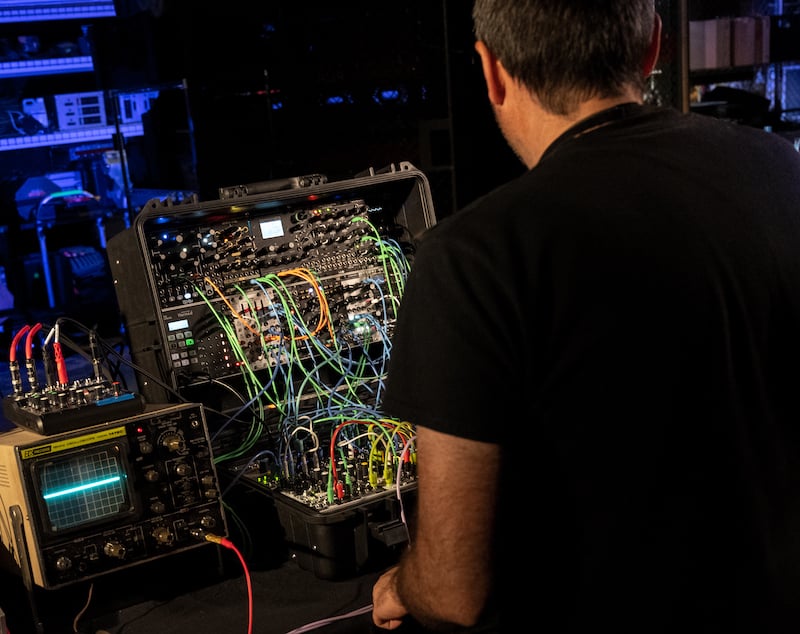
Another thing we’ll remember about the making of this library is the research. We got to re-watch some of our favorite anime movies and series. We also watched some stuff that wouldn’t normally be within our personal preferences. Anime is an amazingly broad genre, if you can even call it a genre. I’m no expert, but there are dozens of sub-genres and they’re not all for every viewer. I’m personally glad I stepped outside my comfort zone - I ended up really liking a couple of series that I wouldn’t have given a chance before!
For the record, my personal favorite anime series for sound is Neon Genesis Evangelion. The sound effects are huge, retro, disturbing and gritty. The music is also incredible, ranging from huge brass arrangements reminiscent of Godzilla movies to the haunting and minimal end credit music. My favorite anime feature film for sound is Nausicaa of the Valley of the Wind. It’s from the early 80s and pushes all of my nostalgia buttons. Every sound effect in the whole movie is an unpolished gem and Joe Hisaishi’s score is absolutely soaring!
Drew here! My personal favorite anime is Trigun with Cowboy Bebop as a close second. I’ve also indulged in some of the less serious anime like Ranma ½ . I never thought a show about characters that transformed in hot or cold water would have any real world applications, but being versed in that type of anime definitely helped for the comedic emotes. I also spent time chasing the sounds of 80’s American animation that seemed to share a lot of sound cues with Anime. This would be the G.I. Joe, Transformers, MASK, camp of sounds.
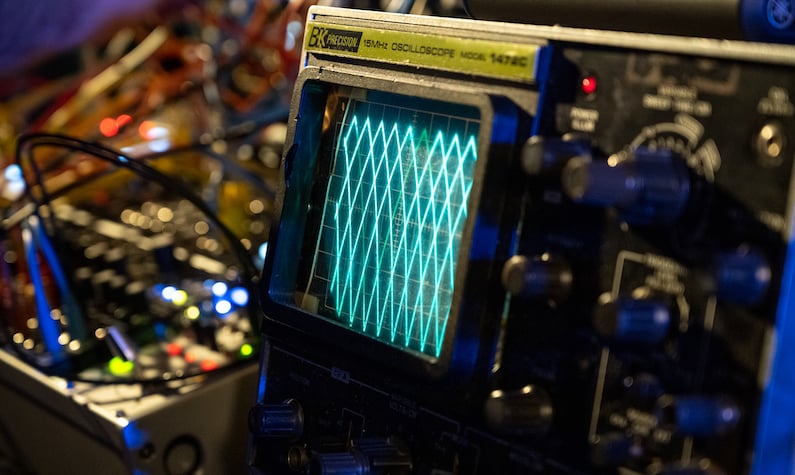
How can sound artists use this library?
Sound artists can use this library to add a retro, sci-fi, or action vibe to just about any project that calls for it.
One thing we definitely considered when we decided to make this library is how common it is for video games to have an anime-inspired visual aesthetic. However, the sound effects that go with that aesthetic can be difficult or impossible to find, and not every game dev has the resources to hand craft them from scratch. A lot of the time the sound effects end up being 8-bit, which is very cool in its own right, but not of the right aesthetic. Our hope is that this library can be a staple for any game dev looking to craft a more authentic anime-inspired experience. Also, we watch way more cartoons than most adults so we’d be thrilled to hear our sounds in anything animated. The medium has limitless potential and we found it to be incredibly inspiring to work on a project that will have a home in animation.

What makes Anime different from other sound libraries?
The main thing that makes this library different from most others is that it’s focused on the genre of anime. There aren’t many anime inspired sound effects libraries on the market, at least here in the US. The few that came up in our research are truly great, but as I mentioned before, the umbrella of anime covers such a huge variety of sub genres and styles that it’s impossible to comprehensively cover the entire universe of sounds in anime. We hope that our take on the genre covers a little bit more terrain and makes it possible for content creators to tackle anime content with confidence.
What were some of the tools you used to record and create this library?
Practically every sound in this library was designed on our Eurorack modular synths. With travel being difficult to impossible over the last year and a half, we invested in our hardware synthesis capabilities instead. This library wouldn’t have been possible working “in the box”. We feel that the production value of using analog hardware can’t be matched by software, and we hope the results bear this out. Allow us to elaborate for the synth nerds out there. Here are our top Eurorack modules for anime sound design:
– Intellijel Planar 2 / Joystick
Sometimes it’s easier to perform the modulation you are hearing in your head. The performability of a joystick plus quick access to a manual gate made Planar utterly indispensable. The build quality of this module is extremely high, and good thing it is because we ABUSED it on almost every patch.
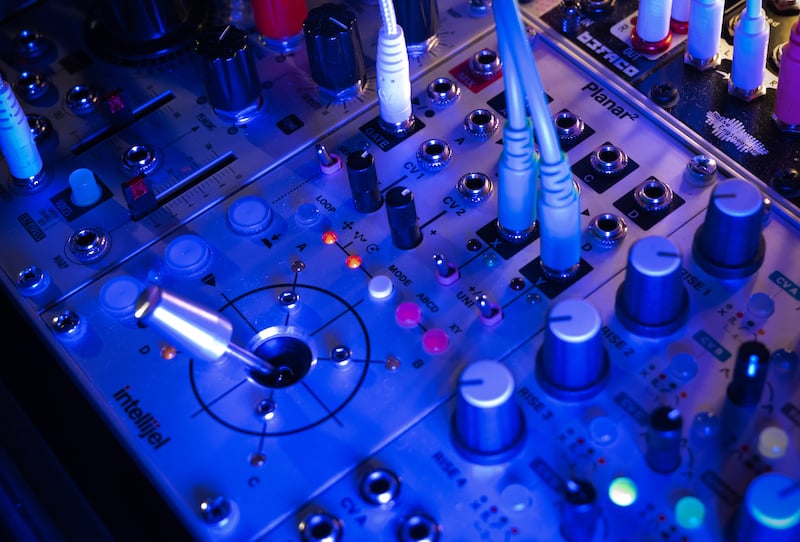
– Schlappi Engineering 100 Grit / Distortion
The distortion on this thing is bonkers - unstable, unpredictable and analog. Fortunately, 100 Grit is also a low pass filter so it cleans up its own mess on the high end. Touch sensitive controls with internal normalizing make it easy to apply a slightly different flavor of distortion to every take. Finally, it has a built-in VCA to clamp down on any residual noise after the sound has ended.
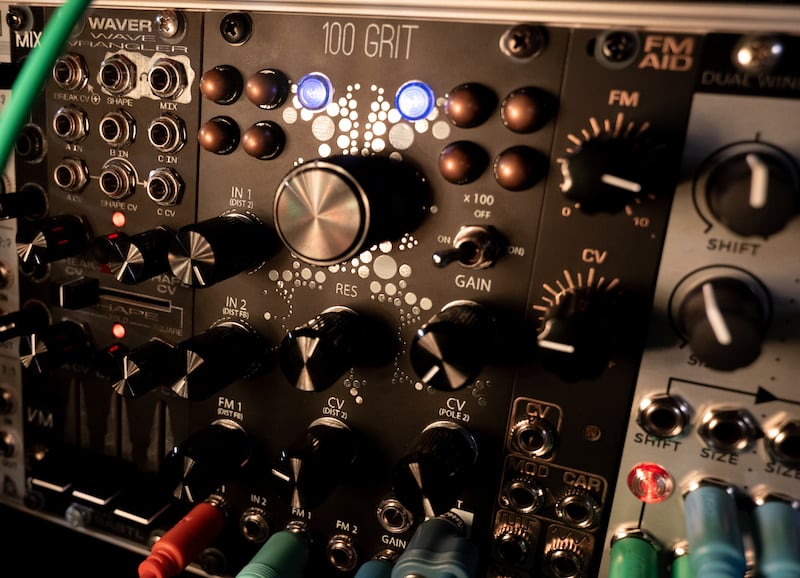
– Casper Bastl Ikarie / Stereo Filter
This module possesses a few advantages over other filters that make it ideal for this kind of work. First, it has an input gain control that adds a nice overdrive if you push it. Then, it has a built-in envelope follower that is fast enough to keep up with the transient on an explosion. The resulting envelope can be sent to virtually any modulation destination with great results. Finally, it self-resonates beautifully. A lot of the sounds in this library didn’t have a VCO as the sound source, but rather the Ikarie in self oscillation mode.
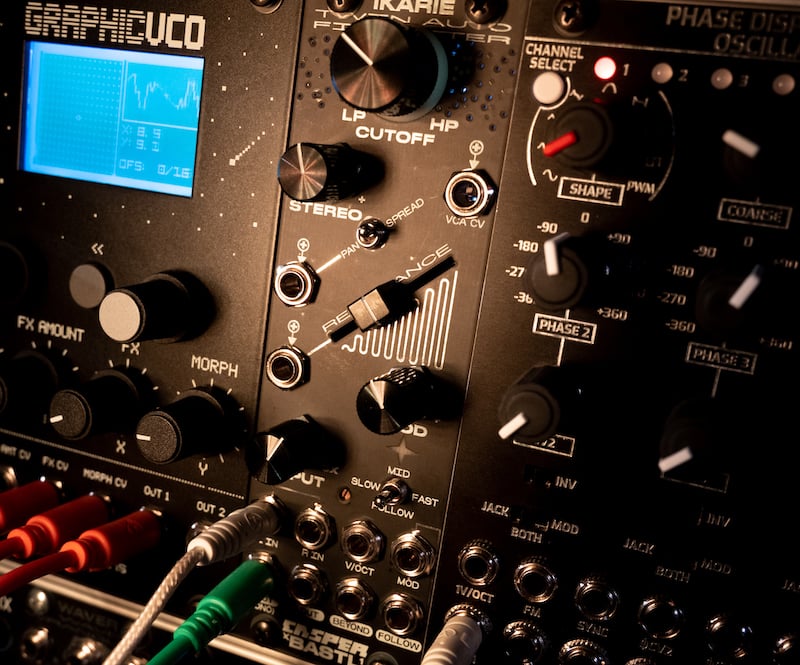
– Audio Damage ADM04 / Frequency Shifter
This particular module is out of production, but we were lucky enough to score a couple. It’s squirrely as hell, but the frequency shift effect is vital to the classic anime sound. We found early on that it needs to be processed in parallel with a dry signal to keep it grounded in sanity. We also found that the CV needs to be tightly controlled and attenuated to avoid some extremely harsh sonic terrain. With some patience and lots of curation it gets the job done admirably and was the centerpiece of tons of patches.
– Alright Devices Chronoblob2 / Stereo Delay
After the frequency shifter, delay was the next most valuable effect. Oftentimes it was the last piece of polish that brought a patch together in a way that said “yes, this is definitely anime”. Chronoblob is digital, but by very subtly randomly modulating the delay time, and by routing the output through a filter modulated to close down in time with the delay feedback it can mimic an analog delay admirably. Every parameter is CV controllable and it’s a joy to play with.
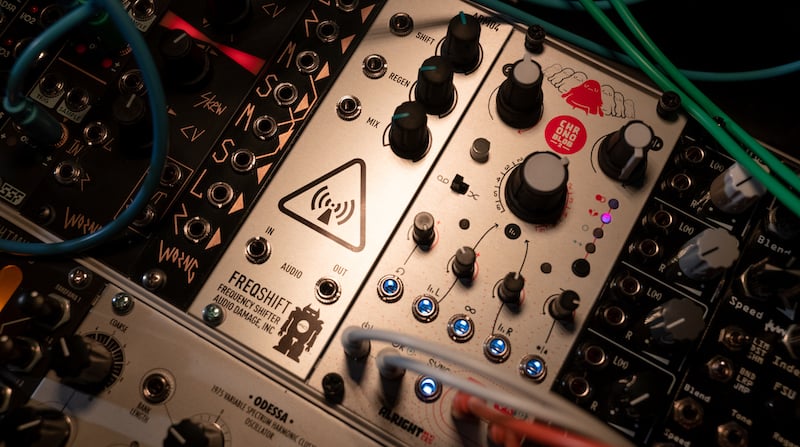
– Instruo Cš-L / Complex Oscillator
The Cš-L is a complex oscillator that leans hard into wave folding and frequency modulation. It ended up being an endless well of sonic sources with modulation. The biggest benefit to keep a clean patch may have been the amount of attenuverters that are built in to commonly patched parameters. The internal routing also helped to dial in several variants of a sound for rapid idea generation. Aside from the tech jargon, it sounds incredible.
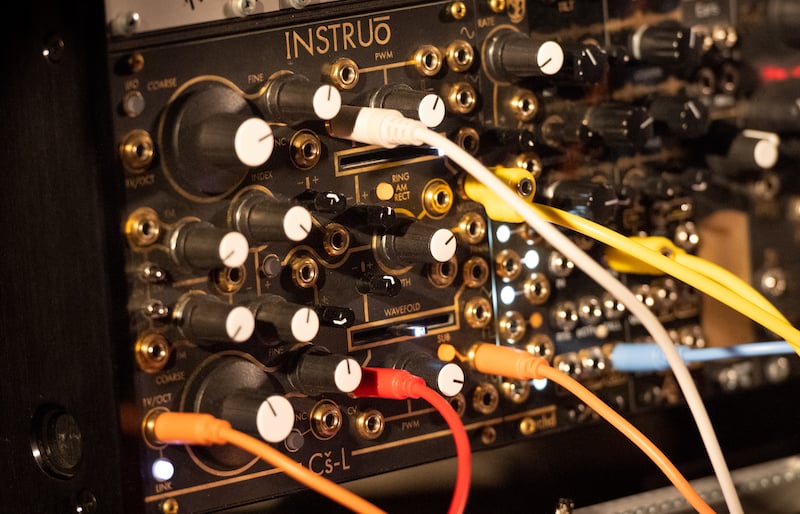
– After Later Audio Tilt / Function Generator
After Later Audio’s Tilt is a function generator that is utilized in just about every patch. It can do everything from modulation to slew limiting, for beam weapon sounds it’s a fantastic envelope generator. It gives plenty of options for shaping an envelope and the slopes so you can shape just the right discharge sound for any mechanic imaginable for an energy weapon.
– Moog Matriarch / Semi-Modular Synth
While it’s technically not modular, the Moog Matriarch was an absolutely essential piece of equipment. With it’s vintage oscillators, Stereo Ladder Filter, BBD Delay, and generous patch points, it functions as essentially a handful of premium vintage modules. A lot of sounds that were auditioned on more modern equipment immediately sounded closer to the mark when done with the Matriarch.
Finally a general statement on modular synthesis. Utilities are vitally important. They tend to be forgotten and aren’t especially glamorous since they don’t make sound. However, without attenuators, offsets, VCAs, mixers, and oscilloscopes to visualize our voltages none of the sounds in this library would be possible! Anime sounds have a ton of expression to them, almost like UI sounds, and the only way to extract an emotive performance is to maintain good and intentional control of voltages. For a library like Interference, a lot of the control voltage was raw - with huge extremes between low and high voltages (and thus huge extremes in the resulting sound of whatever parameter we were modulating). Anime required a more subtle and controlled approach and the only way to accomplish this is with humble utilities.













